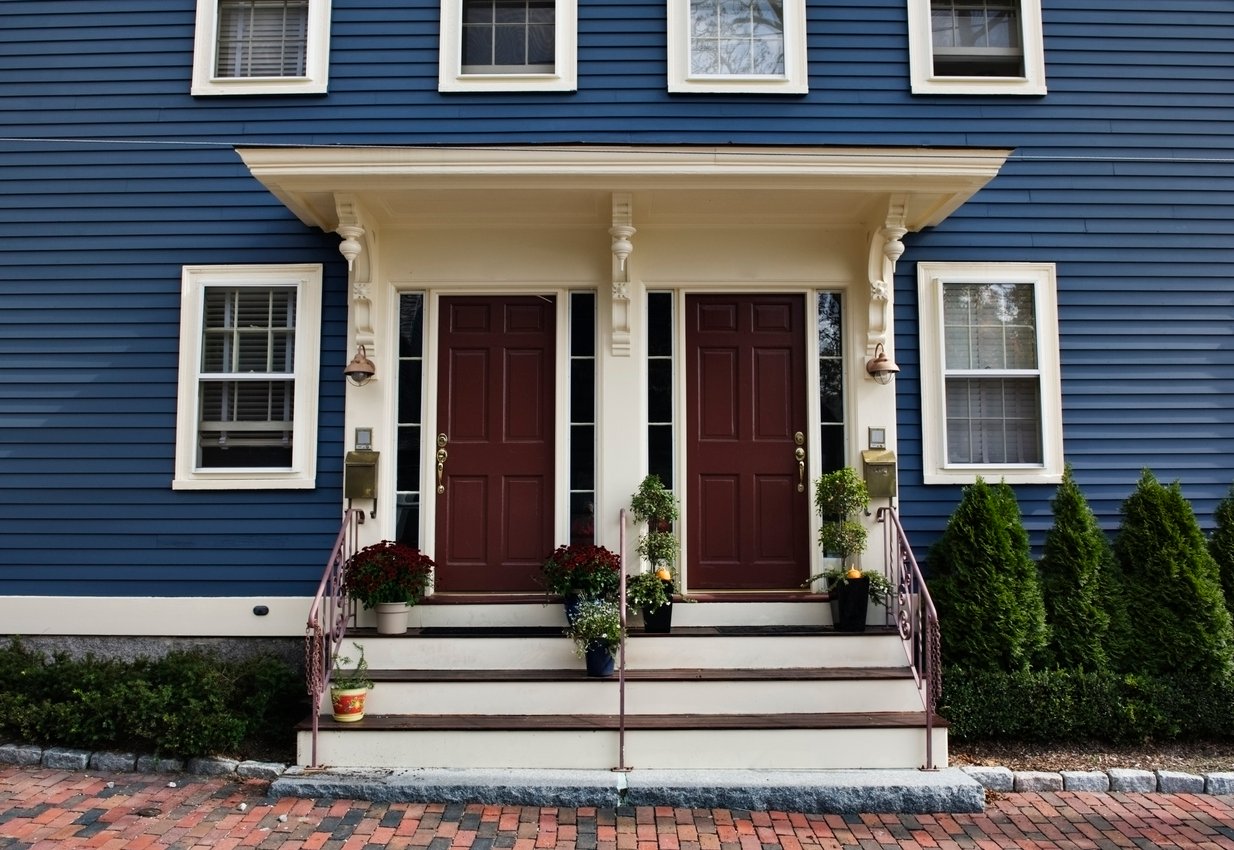Have an extra $50,000 collecting dust in a savings account, and not sure what to do with it? As problems go, that’s a good one to have. However, the skills required to earn and save money prove very different from the skills required to invest it well.
You could invest that $50,000 in the stock market of course, though you’d have to accept the risk that comes with stocks’ volatility. Or you could invest it in government bonds for lower volatility, and accept the lower yield and returns.
If only there were a third option, that combined both the returns of stocks with the low volatility of bonds!
Enter: rental properties. One joint study by the University of California and the German central bank found that over the last 145 years, real estate offered the highest returns of any asset class. Even better, it did so with far less volatility than stocks.
As you ponder what to do with $50,000, consider the following seven ways to invest it in real estate for high returns, low volatility, and a relatively passive source of income.

1. Buy a Turnkey Rental Property
Two of the most common complaints I hear from new real estate investors are “I don’t know how to find deals” and “My home city offers bad returns on rental properties.”
Fortunately, there’s an easy solution to both complaints: buy a turnkey property.
To begin with, turnkey properties are easy to find, through nationwide platforms like Roofstock. You can buy properties on the other side of the country, with a wealth of transparent details such as neighborhood market data and property history.
That makes finding properties and analyzing the numbers easier. In addition, turnkey properties don’t typically require any renovations, which removes even more headaches in the acquisition process. Many turnkey properties even come with tenants already in place, so you can start collecting rent from month 1.
All you have to do is choose a property, do your due diligence, and finance it with an investment property loan. Of course, there is also the option of buying a property costing less than $50,000 -- although having been there and done that, I don’t personally recommend it. In my experience, lower-end properties just come with too many headaches, from rent collection challenges to crime rates to high maintenance and repair costs.
If there’s a downside to turnkey properties, it’s the difficulty in finding high-quality properties with equally high returns. The simple fact is that these are properties owned by another investor, selling publicly at market pricing.
There’s little opportunity to “force equity” through renovations, because turnkey properties don’t need them. And unlike scouring your city to find motivated sellers, you aren’t reaching turnkey sellers before any other investors.

2. Buy, Renovate, Rent, Refinance, Repeat (BRRRR)
Another way to buy long-term rental properties is the BRRRR strategy. It stands for buy, renovate, rent, refinance, repeat.
What makes this strategy so powerful is that you can pull your initial down payment back out of the property when you go to refinance. That means that you can potentially finance 100% of your acquisition costs.
In this manner, you can recycle the same $30,000 over and over again, all while continuing to build a portfolio of income-producing properties. It’s the ultimate way to leverage other people’s money to create your own asset portfolio.
For example, I once bought a property for $100,000, put 10% down, renovated it for around $30,000, and then refinanced it for around $150,000. It rented for around $2,000 per month, and, after the refinance, I had my original down payment and closing costs back in my bank account to do it all over again.
Unlike buying a turnkey property, this strategy requires more labor on your part. Labor to find good deals, labor to hire and manage contractors, labor to oversee the renovation, labor to finance the property twice over. For that additional labor, you can often find better deals and pull your cash back out of the deal to reinvest elsewhere.
While the BRRRR strategy can work well in your home market where you can oversee renovations personally, it proves infinitely more difficult to do long-distance. If investing in another market, consider a turnkey instead.
Whichever strategy you choose, you still benefit from all the advantages of buy-and-hold real estate.

3. Buy a short-term/vacation rental
Just because you buy and hold a property for the long-term doesn’t mean you have to rent it to long-term tenants.
In some markets, you can earn more by using the property as a short-term rental. That could mean renting it on Airbnb to vacationers, or it could mean renting it furnished to corporate lessees such as travel nurses.
It helps to know your business model before buying the property. The revenue and expense numbers vary depending on whether you use the property as a long- or short-term rental, so it changes the cash flow calculations in your due diligence.
Better yet, run the numbers both ways. When you find a property that cash flows well as either a long-term rental or a vacation- or corporate rental, you know you can make money even if the market or local regulations change.
You can finance it with the same investment property loan either way, and you can always adjust your business model for the property as the market changes. As you explore what to do with $50,000, more contingency options can mean more protection against risk!

4. Flip a House
Much as I love long-term rentals, they aren’t the only way to invest in real estate with your $50,000.
If you feel comfortable with renovation projects, contractors, and permits, explore the idea of flipping a fixer-upper. You can avoid the headaches of landlording and earn a relatively quick paycheck.
Just don’t make the mistake of confusing “quick” with “easy.” Flipping houses takes a lot of work, from finding good deals to screening and hiring contractors to overseeing the renovation to pulling permits and hassling with inspectors to marketing and selling the property quickly.
I’ve made $40,000 in four months by flipping a house, and I earned every penny, visiting the property nearly every day and assuming all the risks inherent in a house flip.
Because there are risks when you renovate. Yes, you can forecast the ARV (after-repair value), the renovation costs, and the carrying costs. And if you have experience with renovations, you can do so accurately.
But when you open up the walls in a home, you can never know for certain what you’ll find. Even the most thorough home inspectors don’t have X-ray vision, and can’t tell you with 100% certainty that there are no other hidden dangers lurking behind the walls. I once renovated a house that ended up needing new framing, because the existing framing had started rotting.
This says nothing of the risks involved in working with contractors. Even if they don’t take your deposit and disappear to Fiji for some fun in the sun, many still fail to stay in-budget and on-schedule.
In your first few flips, start with cosmetic repairs. Build trust and rapport with contractors on smaller projects first, and avoid permits and the other risks that come with mechanical and structural repairs. As you gain experience and confidence, expand into larger renovation projects.
With that experience and confidence, you can earn excellent and predictable profits on flips.

5. Do a Live-In Flip
No one says you have to flip a vacant house. Why not live in it for a while first?
Instead of getting an investment property loan, you can finance a live-in flip with a cheap 203K loan through the FHA to put the property in habitable condition. Once it’s livable, you can spend the next year or two updating the kitchen, bathrooms, and other components to raise the property value.
If you wait at least one year to sell, you only pay capital gains taxes on the profits, not your full income tax rate. If you wait at least two years to sell, you pay no taxes at all on the first $250,000 of profits if you’re single, or $500,000 of profits if you’re married.
This option fits perfectly for buyers who are handy and enjoy tinkering around the house – especially those in higher tax brackets. The drawback is that you have to actually move in, live in a perpetual work zone for a year or two, and then move again relatively quickly.
I like to think of live-in flips as an unconventional form of house hacking. When you go to sell, your gains should more than cover your housing payments for the last year or two, meaning that a successful live-in flip also means net free housing.

6. House Hack
The classic house hacking model involves buying a multifamily property, moving into one unit, and renting out the other(s). Your neighboring tenants cover your mortgage with their rent payments, and ideally your other non-mortgage expenses to boot.
The upside: you live for free.
Multifamily properties are far from the only option for house hacking. I’ve house hacked with housemates before. My co-founder at SparkRental, Deni Supplee, has house hacked by renting out storage space.
Today she takes it a step further: she brought in a foreign exchange student and the placement company pays her a monthly stipend that covers most of her mortgage. In fact, her home is a mixed-use property with two residential units and one commercial unit. Her daughter lives in the neighboring residential unit and covers a hefty chunk of the mortgage, and she and her husband write off the commercial unit as the headquarters of their businesses.
You can get as creative as you like with house hacking. Rent out rooms on Airbnb, or your entire home when you’re not using it. My friend Renee covers the bulk of her rent by leasing one bedroom for two weeks out of the month.
Best of all, when you house hack, you can use traditional mortgage financing rather than an investment property loan. That means a far lower down payment, usually 0-5% instead of 15-30%. It also means lower interest rates and lender fees, making for far more attractive financing.
And when you move out? You can keep the home as a rental property, with your owner-occupied loan left in place.

7. Invest in real estate indirectly
Much as I love directly investing in real estate, it requires knowledge and a degree of work. If you’re wondering what to do with $50,000 and don’t have the time or interest to learn how to invest directly, but still want to diversify your portfolio to include real estate, you have a range of options to invest indirectly.
The traditional indirect real estate investment is publicly traded REITs (real estate investment trusts). You can buy shares in them through your regular brokerage, your IRA or Roth IRA, and often through your employer-sponsored retirement account like a 401(k).
They trade like mutual funds or ETFs (exchange traded funds), and come in two varieties. Equity REITs buy and manage real estate directly, and mortgage REITs lend against real estate. Like stocks and mutual funds, REITs are highly liquid and make it easy to diversify your investments. Vanguard offers several low-cost real estate mutual funds and ETFs; see their VNQ, VGSLX, and VGSIX funds.
More recently, crowdfunding websites have risen to offer an alternative to publicly traded REITs. While they originally only allowed accredited investors to participate (often with minimum investments higher than $50,000), many now allow anyone to participate. I’ve invested money in Fundrise and Groundfloor, which both allow relatively low minimum investments (as little as $10, in the case of Groundfloor).
If you personally know real estate investors with a track record of success, you can also lend money toward their real estate investing projects in the form of private notes. As investors scale and grow, many move away from investment property loans and raise money privately from friends and family. For example, I earn 10% annually on a private note with an investor I know in northeast Ohio.
What to do with $50,000 beyond real estate
Not everyone feels comfortable investing tens of thousands of dollars in real estate and some investors want to prioritize tax-sheltered accounts like a Roth IRA, 401(k), or HSA before investing in taxable assets.
Aside from publicly-traded REITs and real estate mutual funds, it’s not easy to invest in real estate in these tax-sheltered accounts. To do so requires a self-directed IRA or other account, which costs time and money to set up and manage.
To get your funds out of your savings account and working for you, one good starting place is stock index funds. Brokerages like Vanguard and Charles Schwab offer a range of low-cost index funds, covering stocks from small cap to large, domestic to international, and every sector under the sun.
Consider keeping some funds set aside in stable, low-risk investments that you can access instantly as an emergency fund. While you don’t need to keep your emergency fund in a checking or no-interest savings account, consider money market accounts, high-interest online savings accounts, or even short-term government bond funds. Ideally the account should be FDIC-insured.
Final Thoughts
Real estate can offer a relatively stable return on investment – for those investors willing to invest not just money, but time and knowledge.
Indirect real estate investing can help you diversify into real estate as you learn the ropes. It’s completely passive and headache-free, but don’t expect to earn the same returns that you can as a direct investor.
Each of the ideas above for what to do with $50,000 comes with its own pros and cons. There’s no one ideal way to invest in real estate, so instead choose the option that best fits your financial goals and priorities.
Personally, my goal is to reach financial independence and retire early (FIRE) within five years. I’m working my way there with a combination of turnkey properties, renovation rental projects, house hacking, indirect real estate investments, and stock index funds.
What are your goals? How are you planning on reaching them? Reach out and let me know how I can help!










